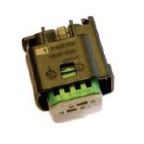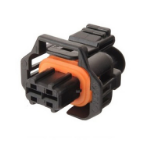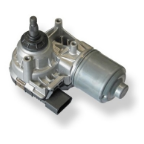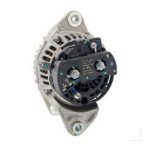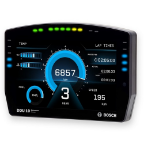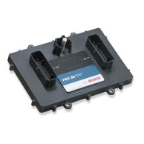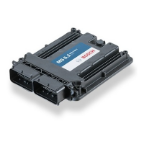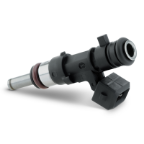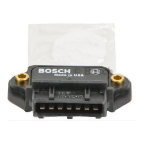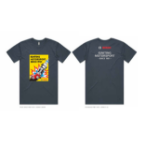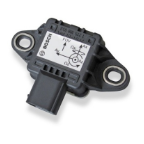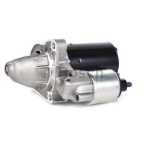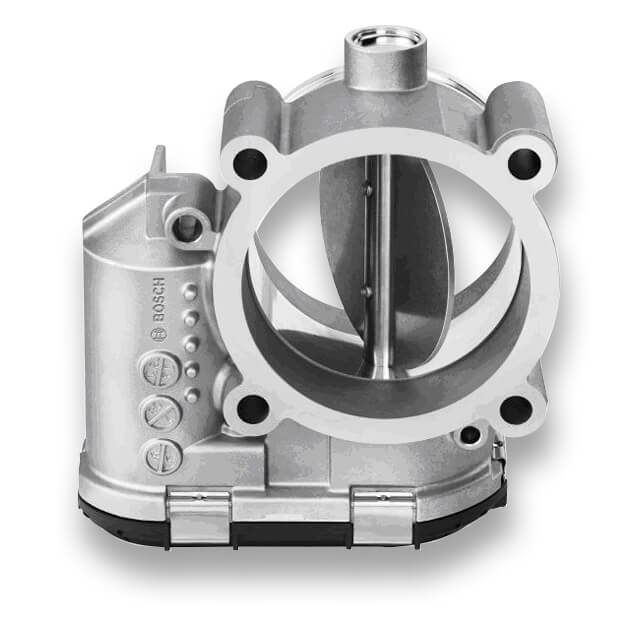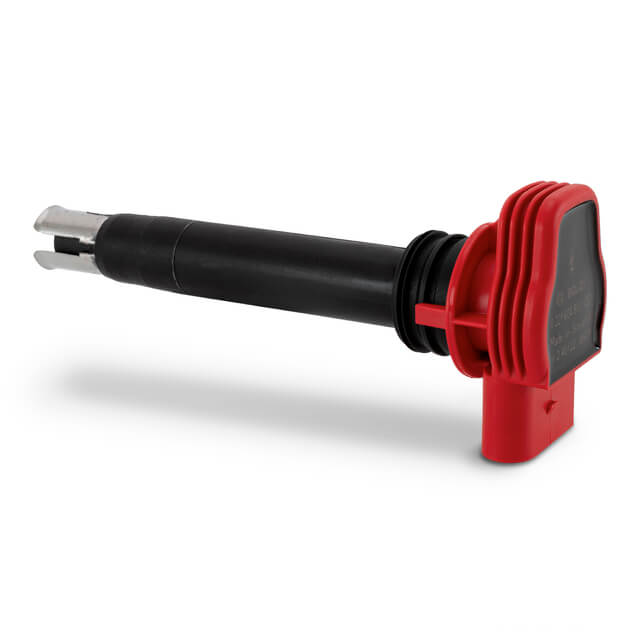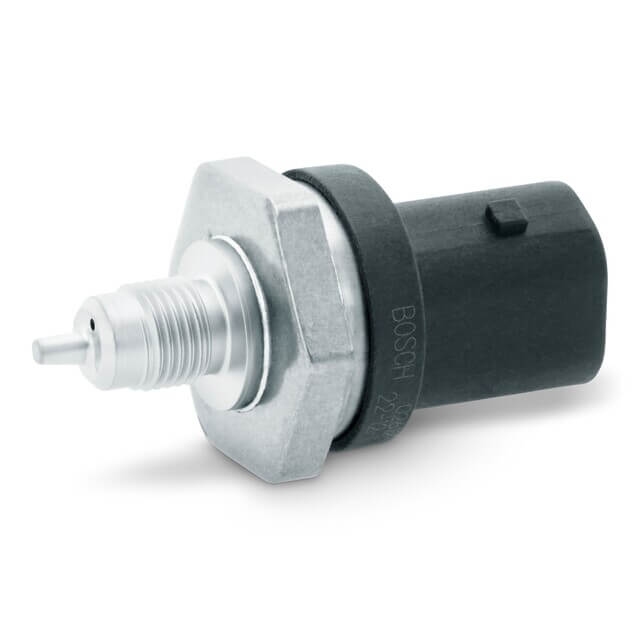Featured Products

FPx-HF - In-tank Fuel Pump. Up to 540 l/h (BR540)
SKU: F 02U V0U 343-01 (Typically ships in <3 bus. days)
$280.50

LSU-4.9 Oxygen Sensor, Motorsport version
SKU: 0 258 988 001 (Typically ships in <3 bus. days)
$217.57
Tech & Product Overviews

Fuelling the Future: The Ligier Automotive JS2 RH2
How do you keep the essence of motorsport, whilst trying to create a cleaner, carbon neutral future? This is the question that is driving the development of Bosch Engineering and Ligier Automotive’s collaboration, the Ligier Automotive JS2 RH2. Since it’s unveiling at Le Mans in 2023, the RH2 has accumulated over 7,000km of testing, as engineers continue to tinker and optimise the package to find solutions that will help shape the future of motorsport. On the outside, the JS2 RH2 takes its bodywork from Ligier Automotive’s popular JS2 R one-make racer, but underneath lies a carbon monocoque, adapted from the brands successful LMP3 car, replacing the standard tubular chassis. The switch to the monocoque was necessitated by the packaging requirements of the RH2s three carbon fibre high-pressure tanks, which are placed on both sides of the car and behind the passenger cell. The JS2 RH2’s tanks are designed for a system pressure of 700 bar and carry 2.1kgs of H2 content each. However, this has not had a significant impact on the cars overall weight, which clocks in at 1450kg. Safety is paramount, with Bosch Engineering implementing a multi-stage safety concept that utilises a combination of active and passive measures. An intricate piping system connects the three tanks with the vehicles injectors, with the system and tanks being monitored by the Hydrogen Storage Control Unit, specifically developed by Bosch for hydrogen applications. This system communicates with the rest of the vehicle's electronics through the vehicle's CAN bus. As hydrogen is extremely flammable, great care has been taken with the packaging of the system. The tanks, gas control components and the engine compartment are separated, whilst a complex passive ventilation system ensures that gases are vented outside the car, away from the passenger compartment and the hot engine bay. Any potential leaks from the system will be caught by the wide array of safety sensors fitted to the car, and if these sensors detect something is amiss, the multi-stage active safety concept will kick into action, ranging from a warning on the drivers display all the way to a total system shutdown. Powering the JS2 RH2 is a 3.0-litre biturbo V6 that produces 443kW and 650Nm of torque, with Bosch Engineering working its magic on the ignition and injection system to realise the lean, low nitrogen oxide combustion concept of the engine, whilst also keeping it as responsive as a regular racing engine. Attached to the V6 is an eight-speed DSG gearbox, whilst the stopping power is provided by the usual 6-piston callipers found on Ligier Automotive’s LMP3, with Bosch Motorsport ABS providing the driver with extra stopping power in the braking zone. The collaboration between Bosch Engineering and Ligier Automotive is a part of a wider strategy, with the organisers of the Le Mans 24 hours targeting a 2028 berth for a hydrogen car on the grid, whilst also having further plans for a hydrogen class in the following years. The JS2 RH2 is proof that the concept is viable and will play a major part in developing a sustainable future for the sport we love so dearly. Images courtesy of Bosch Engineering .
Learn more
Harnessing the Beast: Taming Tanuki with Motorsport ABS
How do you slow over 1000hp, 1100 N·m of torque and over four tonnes of aero? You need more than just big discs and a brave driver. Bosch Motorsport ABS was tasked with helping harness the beast that is Tanuki at this year’s World Time Attack Challenge, with Todd Hazelwood achieving the S13’s best time yet on the way to the win at Sydney Motorsport Park. Supporting the GT Auto Garage team was Bosch Motorsport Authorised Dealer 909 Motorsport, alongside three Bosch Engineering Japan engineers, who had deviated from their usual Super GT, Super Taikyu and WEC duties to support Tanuki with a custom Motorsport ABS calibration. WTAC 2025 marked the first time Bosch Motorsport has supported an Australian customer with a custom calibration for their Motorsport ABS system, with these programs typically being offered to OEM and professional motorsport programs globally. The extreme braking zones at SMSP gave Bosch’s Nomura-san and Shimizu-san plenty of data to help Hazelwood refine Tanuki’s ABS system, handing the 2024 Bathurst 1000 winner maximum confidence to set a mesmerising 1:18.1 and take the overall crown. If you're after inhuman braking power for your car, contact one of our authorised dealers today!
Learn more
Legend of The Lakes 2025 Recap
Mount Gambier’s picturesque Valley Lake came alive with the sound of engines for the 2025 edition of the Trident Tyre Centre Legend of The Lakes Hillclimb. Every November, 150 drivers take on the challenging 1.3km track that weaves its way up one of the most stunning backdrops in global motorsport, an extinct volcano. Often considered Australian motorsport’s best kept secret, this year’s event was a special one, with the South Eastern Automobile Club celebrating the events 20th anniversary. The SEAC kicked off the celebrations by inducting a select special few officials and competitors to a newly created hall of fame, whilst also putting on an invite only track day for long time competitors on the Thursday before competition. This year’s Legends was a family affair, with father-son, father-daughter and mother-daughter duos all taking part in competition. It’s also an event for all ages, from the junior class competitors in their teens to 82-year-old Norm Goodall in his Porsche, highlighting the beauty of this event. Legends bridges generational gaps, with passion being the driving force that brings everyone together and keeps them smiling. A highlight of the weekend was the Legends debut of Damien Brand’s GC8, a love-letter to the halcyon days of WRC, but packed full of cutting-edge technology. Brand, who was inducted into the hall of fame, has competed in every single Legends and spent ten years putting together a special car for this event, with ‘WRCMAD’ carrying an array of Bosch Motorsport Australia sensors and our BR540 fuel pumps. Once again, the headline act was Dan Day in SJ1000, who topped the timesheets for the tenth consecutive year, setting a blistering 48.85 second run in the Bosch Motorsport Australia Top 10 Shootout. Whilst mother nature didn’t allow for Day’s own record, a 48.05 set last year, to be broken, SJ1000 flexed its immense Bosch Motorsport ABS aided braking capabilities all weekend, with Day consistently setting sub 50 second runs in greasy conditions. Bosch Motorsport Australia is proud to support this event and offers its congratulations to all competitors and officials for making the 20th anniversary such a special weekend. Here’s to 20 more!
Learn more
Inside the 190E Evo II: How Bosch Brought Precision to the Circuit
Touring car racing has long captured the imagination of motorsport fans, blending the familiarity of road-going vehicles with the thrill of high-performance competition. These competitions see manufacturers pitting their modified road-going models against one another, enhancing performance and aerodynamics to achieve racing excellence. Touring car racing is characterised by the use of modified production cars that, while originally designed for road use, undergo significant alterations to meet the demands of competitive racing, adhering to strict homologation standards for fairness and safety. One of the most iconic examples of this philosophy in action is the Mercedes-Benz 190E, particularly the Evolution II variant, which bridged the gap between showroom and circuit with cutting-edge innovation and motorsport intent. The Mercedes-Benz 190E holds a legendary place in motorsport history, known not only for its performance but also for its pioneering use of advanced technology on the racetrack. In 1990, Mercedes introduced the 190E 2.5-16 Evolution II, a road-legal homologation model built to meet Group A touring car regulations. Just 502 units were produced, making it a rare and highly engineered machine. Beneath its aggressive bodywork and large rear wing was a production car developed with competition in mind. However, the DTM race car version of the Evo II was a distinctly different machine. While it shared the body shell of the road car, the race variant underwent extensive modification for professional use. It featured the same Cosworth-developed 2.5-litre engine, but with revised internals, increased compression, and tuning for high-revving track performance. The suspension, aerodynamics, and chassis setup were tailored specifically for the demands of competitive touring car racing. ❮ ❯ What further elevated the 190E Evo II on track was the integration of Bosch electronic systems, including the Motronic ECU and a Motorsport Anti-lock Braking System (ABS). While the road-going Evo II already featured an advanced Bosch ABS system for its time, helping everyday drivers stay in control under hard braking, it was the first time that race-specific ABS had been introduced, giving the 190E the desired ‘unfair advantage’ over the competition of the day. This Bosch Motorsport specialised ABS setup was tailored specifically for the demands of racing. Unlike the production unit which prioritised safety and stability in varied road conditions, the motorsport version was engineered for maximum deceleration of each individual wheel. This allowed professional drivers to push their braking limits deeper into corners than ever before, slashing qualifying times and carving up competitors in the braking zone. In the early 1990sn November of 1990, the 190E made headlines at the Kyalami racetrack, where it showcased the effectiveness of the Motorsport ABS system with Roland Asch at the wheel. Driven later by DTM legend Bernd Schneider in the vehicle pictured here, the this 190E achieved four wins and secured a 3rd place finish in the Championship. Additionally, it was raced by DTM Junior Team driver Sandy Grau in 1993, achieving a further nine ‘top-10’ finishes. These pivotal moments in motorsport history, marked the first victories for a touring car equipped with the innovative technology of Motorsport ABS. The ability to maintain control during hard braking allowed drivers to push their limits, ultimately leading to more competitive racing. This 1991 Mercedes Benz AMG 190E Evo II, photographed by Richard Opie, still holds many of its original Bosch electronics. Equipped with a Bosch Motronic ECU, which was the pinnacle of technology at the time, the 190E benefited from a system for which BMW was a pilot customer. Bosch Motronic ECU In the golden era of touring car racing, Bosch Motronic ECUs played a critical role in bringing cutting-edge engine management to the grid. First introduced in the early 1980s, the Motronic system provided a fully integrated digital engine management system that combined ignition timing, fuel delivery, air/fuel metering, and knock control into a single control unit. At a time when most race cars were still running mechanical injection or separate ignition modules, Motronic gave engineers a single brain to manage and tune the engine in real-time. This level of precision allowed manufacturers to extract more power, better fuel efficiency, and improved throttle response from naturally aspirated engines. Cars like the BMW E30 M3 and Mercedes-Benz 190E 2.5-16 Evo II relied on Bosch Motronic systems to deliver consistent performance across demanding race conditions. Tuneable, reliable, and far ahead of their time, these ECUs set the benchmark for electronic engine control in touring car competition. Even today, they’re a reminder of Bosch’s legacy in pushing motorsport technology forward. A Win for the Tech, Not Just the Car. The legacy of the 190E continues to inspire car enthusiasts and engineers alike. While the 190E Evo II itself has become a cult hero in motorsport circles, especially among DTM fans, this race marked a wider shift in motorsport engineering. The success of Bosch’s racing technology was a clear signal that electronic driver aids, when developed for performance, could redefine what was possible on track. Reminding us of the importance of innovation in the pursuit of speed and safety. Today, Bosch continues to lead in this space, from motorsport-grade traction control and engine management to advanced telemetry and diagnostic tools used by race teams around the world. Whether it’s a World Time Attack weapon, a rally car in the ARC, or a grassroots circuit car, Bosch tech powers performance.
Learn more
Quality
Every Bosch Motorsport product has quality built-in. The same high-performance products tested in the highest levels of international motorsport are available for your car.

Experience
We know what makes the difference between the top two steps of the podium - and have for generations.

Passion
Passion for technology, continuous improvement and the success of our customers.

